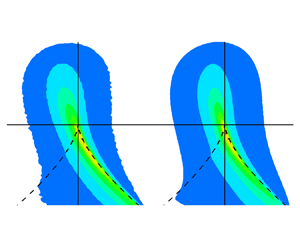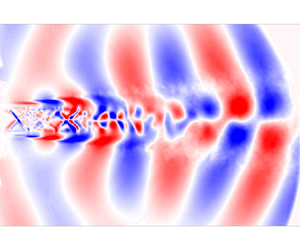Refine listing
Actions for selected content:
1417366 results in Open Access
Atrioventricular valve surgery in patients with univentricular heart and two separate atrioventricular valves
-
- Journal:
- Cardiology in the Young / Volume 34 / Issue 7 / July 2024
- Published online by Cambridge University Press:
- 03 April 2024, pp. 1554-1562
-
- Article
- Export citation
Building On Our Strengths Toward a Bright Future
-
- Journal:
- Canadian Journal of Neurological Sciences / Volume 51 / Issue 2 / March 2024
- Published online by Cambridge University Press:
- 03 April 2024, pp. 151-152
-
- Article
-
- You have access
- HTML
- Export citation
Fairouz and the Arab Diaspora: Music and Identity in the UK and Qatar Dima Issa (New York: I.B. Tauris, 2023). Pp. 232. $103.50 cloth. ISBN: 9780755641765
-
- Journal:
- International Journal of Middle East Studies / Volume 56 / Issue 2 / May 2024
- Published online by Cambridge University Press:
- 03 April 2024, pp. 336-338
- Print publication:
- May 2024
-
- Article
- Export citation
Data-driven model for Lagrangian evolution of velocity gradients in incompressible turbulent flows
-
- Journal:
- Journal of Fluid Mechanics / Volume 984 / 10 April 2024
- Published online by Cambridge University Press:
- 03 April 2024, A39
-
- Article
-
- You have access
- Open access
- HTML
- Export citation
Ethical and Equitable Digital Health Research: Ensuring Self-Determination in Data Governance for Racialized Communities
-
- Journal:
- Cambridge Quarterly of Healthcare Ethics , First View
- Published online by Cambridge University Press:
- 03 April 2024, pp. 1-11
-
- Article
- Export citation
Question of the Delimitation of the Continental Shelf Between Nicaragua and Colombia Beyond 200 Nautical Miles from the Nicaraguan Coast (Nicar. v. Colom.) (I.C.J.)
-
- Journal:
- International Legal Materials / Volume 63 / Issue 3 / June 2024
- Published online by Cambridge University Press:
- 03 April 2024, pp. 327-427
- Print publication:
- June 2024
-
- Article
- Export citation
Self-similarity in over-tripped turbulent boundary-layer flows
-
- Journal:
- Journal of Fluid Mechanics / Volume 984 / 10 April 2024
- Published online by Cambridge University Press:
- 03 April 2024, A34
-
- Article
- Export citation
Language assessment literacy
-
- Journal:
- Language Teaching / Volume 57 / Issue 3 / July 2024
- Published online by Cambridge University Press:
- 03 April 2024, pp. 325-340
- Print publication:
- July 2024
-
- Article
- Export citation
People Like Us? How Mass Preferences Are Shaped by Economic Inequality and Racial Diversity
-
- Journal:
- State Politics & Policy Quarterly / Volume 24 / Issue 2 / June 2024
- Published online by Cambridge University Press:
- 03 April 2024, pp. 167-206
- Print publication:
- June 2024
-
- Article
-
- You have access
- Open access
- HTML
- Export citation
Thank You to Our Reviewers
-
- Journal:
- Canadian Journal of Neurological Sciences / Volume 51 / Issue 2 / March 2024
- Published online by Cambridge University Press:
- 03 April 2024, pp. 341-347
-
- Article
-
- You have access
- HTML
- Export citation
Active control of flow and near-field pressure fluctuations in heated supersonic rectangular twin jets
-
- Journal:
- Journal of Fluid Mechanics / Volume 984 / 10 April 2024
- Published online by Cambridge University Press:
- 03 April 2024, A36
-
- Article
-
- You have access
- Open access
- HTML
- Export citation
Improvisation pedagogy: what can be learned from off-task sounds and the art of the musical heckle?
-
- Journal:
- British Journal of Music Education / Volume 41 / Issue 3 / November 2024
- Published online by Cambridge University Press:
- 03 April 2024, pp. 305-315
- Print publication:
- November 2024
-
- Article
-
- You have access
- Open access
- HTML
- Export citation
Luigi Filieri, Sintesi e Giudizio. Studio su Kant e Jakob Sigismund Beck Pisa: Edizioni ETS, 2020 Pp. 342 ISBN 9788846758699 (pbk) €30.00
-
- Journal:
- Kantian Review / Volume 29 / Issue 2 / June 2024
- Published online by Cambridge University Press:
- 03 April 2024, pp. 341-345
- Print publication:
- June 2024
-
- Article
- Export citation
We'll Play till We Die: Journeys across a Decade of Revolutionary Music in the Muslim World Mark LeVine (Oakland, CA: University of California Press, 2022). Pp. 352. $29.95 cloth. ISBN: 9780520350762
-
- Journal:
- International Journal of Middle East Studies / Volume 56 / Issue 2 / May 2024
- Published online by Cambridge University Press:
- 03 April 2024, pp. 331-333
- Print publication:
- May 2024
-
- Article
- Export citation
JPA volume 98 issue 1 Cover and Front matter
-
- Journal:
- Journal of Paleontology / Volume 98 / Issue 1 / January 2024
- Published online by Cambridge University Press:
- 03 April 2024, pp. f1-f2
-
- Article
-
- You have access
- Export citation
A new species of the genus Hexamermis Steiner, 1924 (Nematoda: Mermithidae) from northern Iran: a nematode with an unusual uterine morphology
-
- Journal:
- Journal of Helminthology / Volume 98 / 2024
- Published online by Cambridge University Press:
- 03 April 2024, e29
-
- Article
- Export citation
NONDEFINABILITY RESULTS FOR ELLIPTIC AND MODULAR FUNCTIONS
- Part of
-
- Journal:
- The Journal of Symbolic Logic , First View
- Published online by Cambridge University Press:
- 03 April 2024, pp. 1-20
-
- Article
-
- You have access
- Open access
- HTML
- Export citation
CJN volume 51 issue 2 Cover and Front matter
-
- Journal:
- Canadian Journal of Neurological Sciences / Volume 51 / Issue 2 / March 2024
- Published online by Cambridge University Press:
- 03 April 2024, pp. f1-f6
-
- Article
-
- You have access
- Export citation
John J. Davenport: The Democracy Amendments: Constitutional Reforms to Save the United States. (New York: Anthem, 2023. Pp. xvi, 231.)
-
- Journal:
- The Review of Politics / Volume 86 / Issue 3 / Summer 2024
- Published online by Cambridge University Press:
- 03 April 2024, pp. 433-435
-
- Article
- Export citation
Jordan Fenlon and Julie A. Hochgesang (eds.), Signed Language Corpora. Washington, DC: Gallaudet University Press, 2022. Pp. xvii+256
-
- Journal:
- Journal of Linguistics / Volume 60 / Issue 3 / August 2024
- Published online by Cambridge University Press:
- 03 April 2024, pp. 695-698
- Print publication:
- August 2024
-
- Article
- Export citation


















